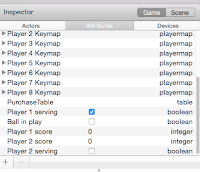Graphics
Positives:
- looks good
- death screen is cool
- nice graphics x2
- graphics look good
- nice background
- good graphics
- the character & aesthetics look good
- I really like the death screen
Negatives:
- needs more animation/graphics
- it would be nice if the bees moved/were animated
- design more interesting platforms
- graphics could look better
Mechanics
Positives:
- cool way to restart the game
- nice restart
Negatives:
- sometimes you are unable to double jump
- if you fail, it breaks
- hit boxes are broken
- no barriers on lose screen meaning you can fall off
- hit boxes are terrible
- jumping not working correctly
- hit boxes are too big
- hit boxes could be better
- needs better collisions
- add a respawn button
- hit boxes need work
- collisions are bad, especially the bees
Gameplay
Positives:
- smooth gameplay
- character handles well
- nice level design
- nice concept
- good concept
- cool death level concept
- gameplay is fun
Negatives:
- needs more explanation
- needs to be more accessible
- needs more levels
- add more difficult levels
Entertainment Factor
Positives:
- challenging
- fun
- nice mic Nic Cage reference
Negatives:
- too easy
- bees are annoying because of hit boxes
- very simple
- very easy
- easy to win
- quite easy
Overall, the response the graphic were really positive, most people liked the look of the background, character and the concept of the death screen. Most said the game ran smoothly and the concept was really cool. It was clear that a lot of people found it too easy and suggested to add other, more difficult levels. However, the biggest problem came down to the mechanics, at times the players could not double jump and would fail and it was clear that the hit boxes were a real issue, they were too large around the bees so it was unclear where you would actually die and this then took away from the enjoyment of the level.

































